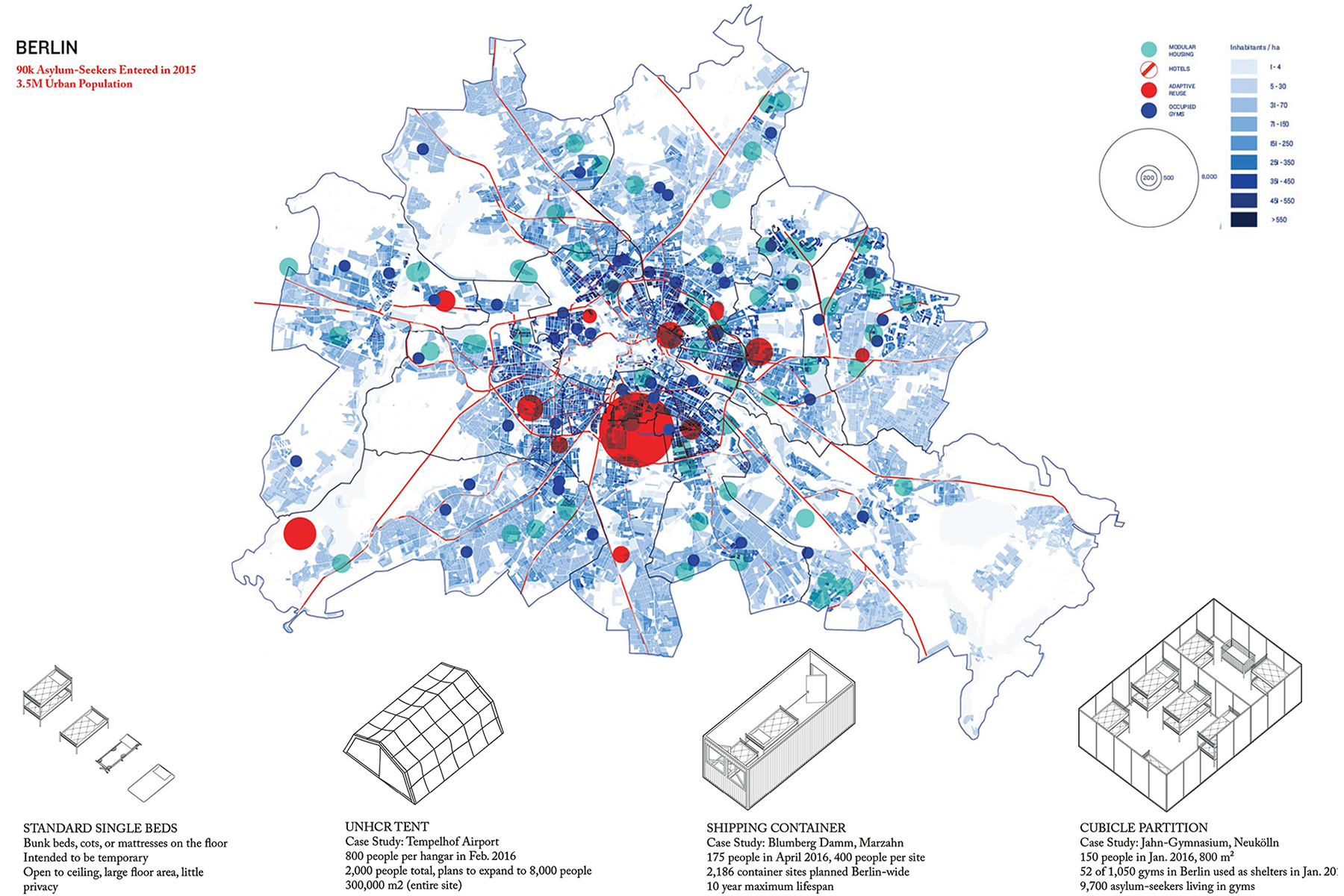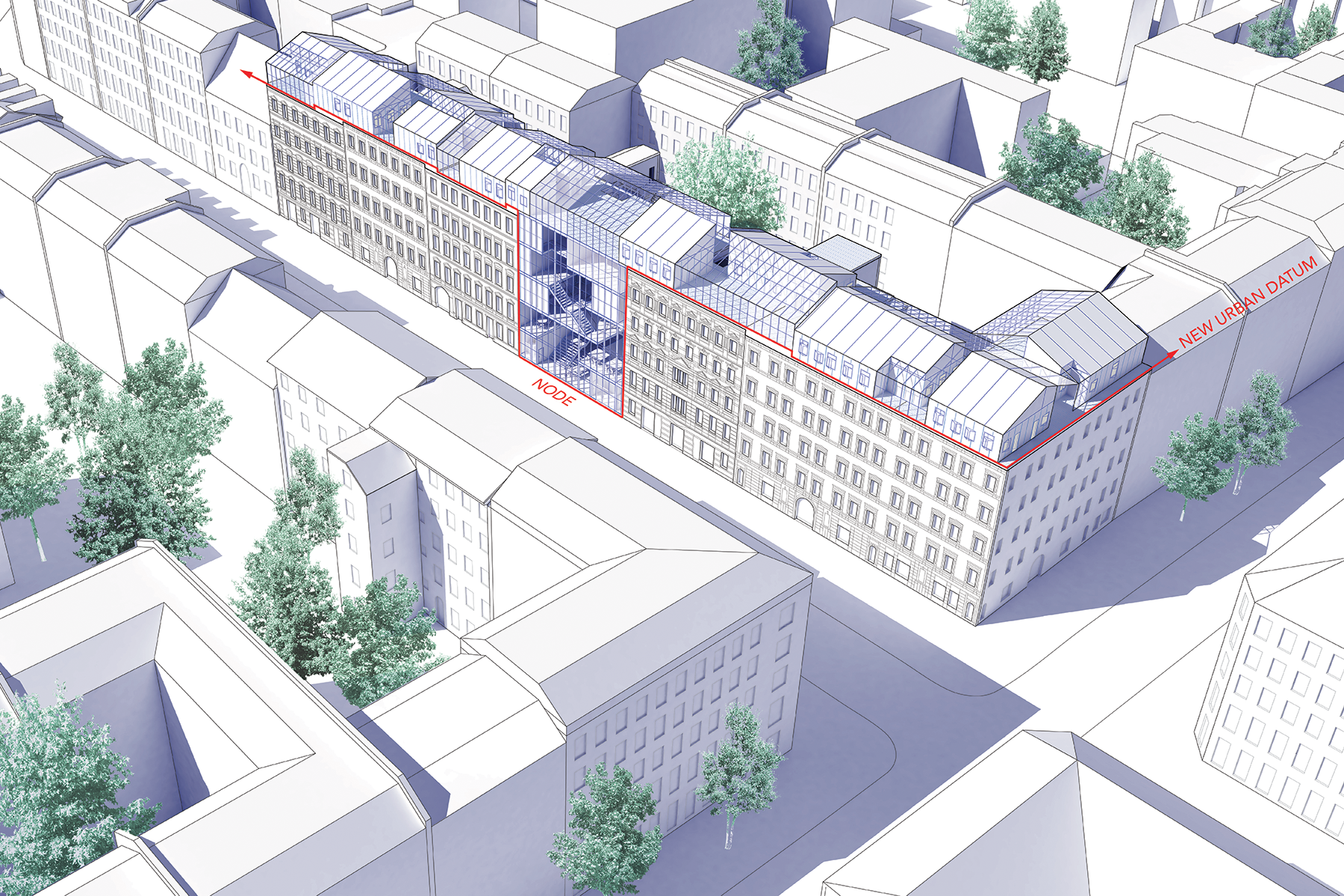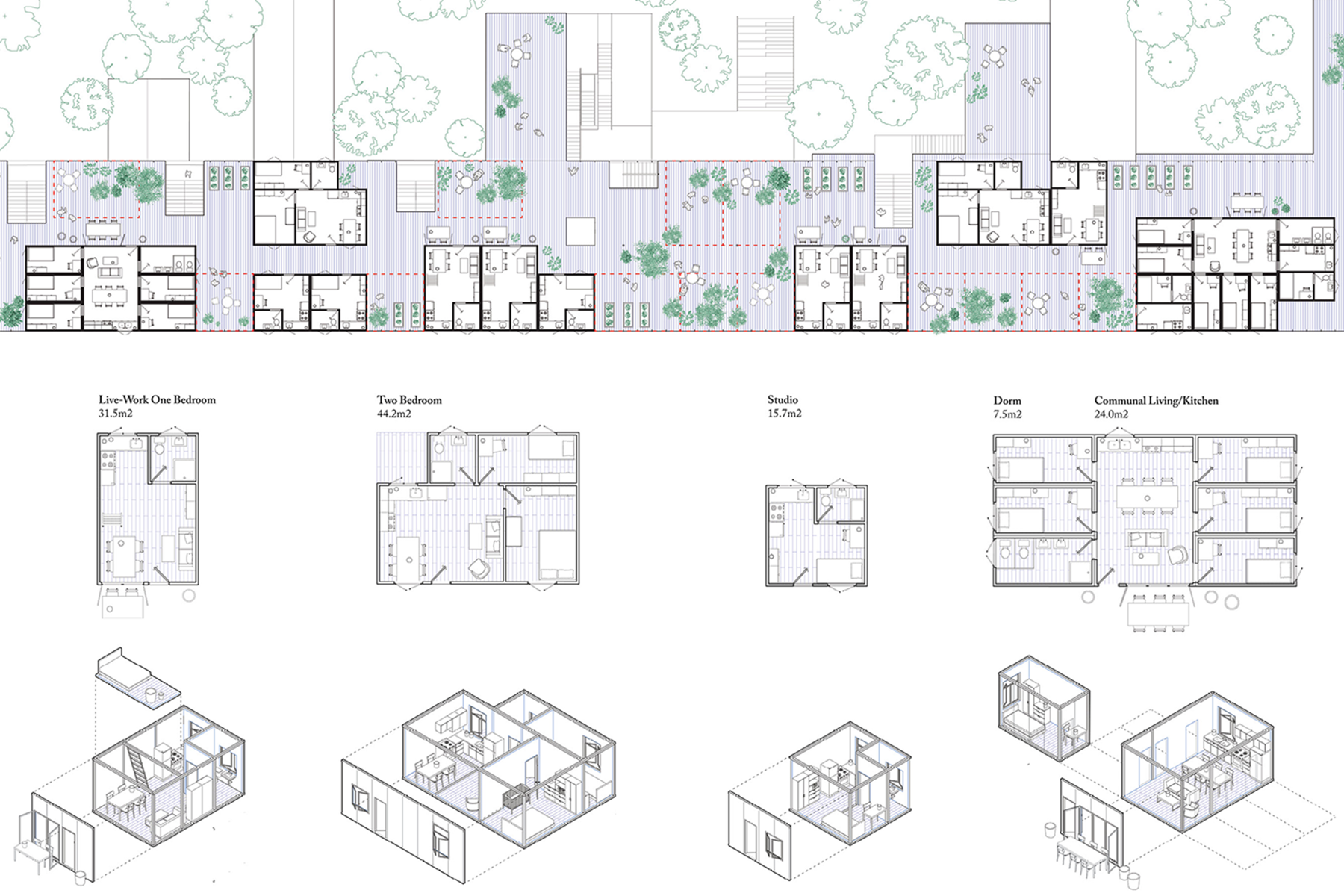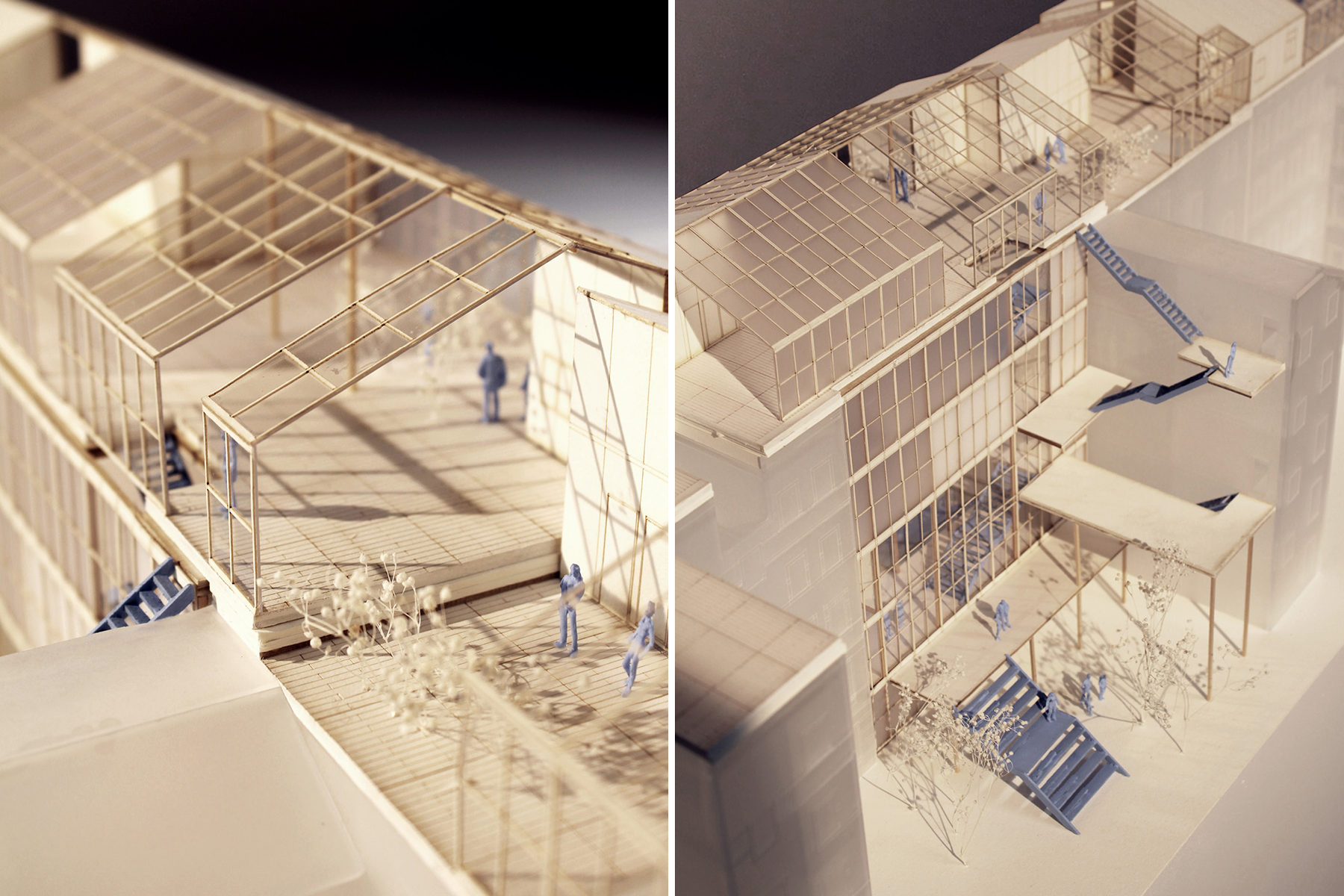






Raise the Roof
M.Arch Thesis Project at Princeton UniversityProject team: Rennie Jones, Abby Stone
Advisors: Liz Diller, Axel Killian
Assistant Advisors: Jaffer Kolb, Michael Faciejew
Architecture is often thought of as superfluous or ineffective in times of geopolitical crisis. Today, worldwide displacement is at the highest level ever recorded. Since conflicts in began in 2011, over 4 million Syrian people have been forced into refugee status, and another 7 million remained internally displaced. While architecture alone cannot solve these problems, it is a central agent in creating the conditions which produce and shape refugee status. If architecture is, at its most basic level, shelter -- then the destruction of architecture (housing) is one of the most powerful ways in which a person is transformed from a resident into a refugee. As Syrian refugees flee the country and seek asylum in neighboring nations, they encounter a series of architectural devices that oscillate between refuge and containment, depending on their context and deployment. For 1.1 million refugees, Germany has become the “end destination” of this journey. We have taken Berlin as a case study to investigate how humanitarian crisis can be reframed as an opportunity for city building.
Architectural proposals for disaster relief have historically emerged in reaction to forced displacements. Here, The Tent has served as the conventional site for intervention. To isolate the tent is missing the point. By merely striving to design a faster, cheaper, better unit, these efforts ignore the long-term and urban effects of their aggregation in real contexts. Time takes on new meaning as an architectural scale in these contexts. Refugee shelters are designed explicitly as temporary, but many become permanent by default.
While the physical trace of human displacement is thought of as confined to the refugee camp, previous trends in human migration have sedimented into the city itself, with its fabric is in constant flux. For example, the Mietskaserne residential block typology, which now dominates the fabric of Berlin, developed in response to the large influx of people moving into the city after the Franco-German War. Today Berlin is again experience population influx, as Germany has become the primary destination for asylum-seekers in Europe. Current responses to large influx in Berlin have mostly been temporary housing in gyms, abandoned buildings, and container villages, which segregate and contain mass numbers of asylum-seekers in over-scaled, oppressive environments. Such strategies are intended as temporary solutions yet require intensive financial and resource investment.
This investment would be better directed toward immediate responses that could grow into long-term infrastructure. Current emergency response strategies ignore the history of how migration already shapes the city. Rather than thinking of these migration crises as temporary fixes, these movements can be re-considered as opportunities for development. Absorptive capacity can be built into cities as a form of long-term resilience to population fluctuation. Refugee housing should go beyond shelter, to be woven into the city and foster integration. In the end, it should meld into the city to become mere housing, rather than be specific to refugees. To tap into existing residential fabrics and keep refugee housing central, Raise the Roof proposes upward expansion, increasing density. This network of rooftop housing and nodes would act as urban infrastructure to absorb population fluctuation in Berlin and mitigate the existing affordable housing crisis.
A system of modular housing units would be placed atop existing Mietskaserne to replace the original roofline, forming an extension of the residential building below. Any resident of the building could access the rooftop patios and gardens, creating points of intersection and interaction between the old and new populations. Additional units could be added in time to increase the housing capacity. In conjunction with these rooftop additions, new structures would fill in gaps in the Mietskaserne fabric as infill communal structures that would act as nodes in a new interconnected system.
The nodes would offer a community center to provide services for refugees, including a co-working space and cafe with wifi connectivity, which would also be open to the community. This space would host all members of the population, creating a meeting point while allowing refugees to participate in the local economy. The circulation scheme weaves throughout the varied programmatic spaces, and connects to the existing Mietshaus corridors and stairs at particular points of intersection. In times of future crisis, the upper levels can be partitioned to create temporary emergency housing and rooftop units could be added to increase housing capacity, activating this new urban infrastructure.
This central system of rooftop housing and nodes could expand throughout the city as necessary, in centrally-located blocks near public transport lines. As numbers of asylum seekers decreased, the housing would become a mix of affordable and market-rate units that would provide a financial return on the city’s investment and relieve the current affordable housing crisis in Berlin. Within the proposed system of housing and node, the distinction between refugee and resident would dissolve.

